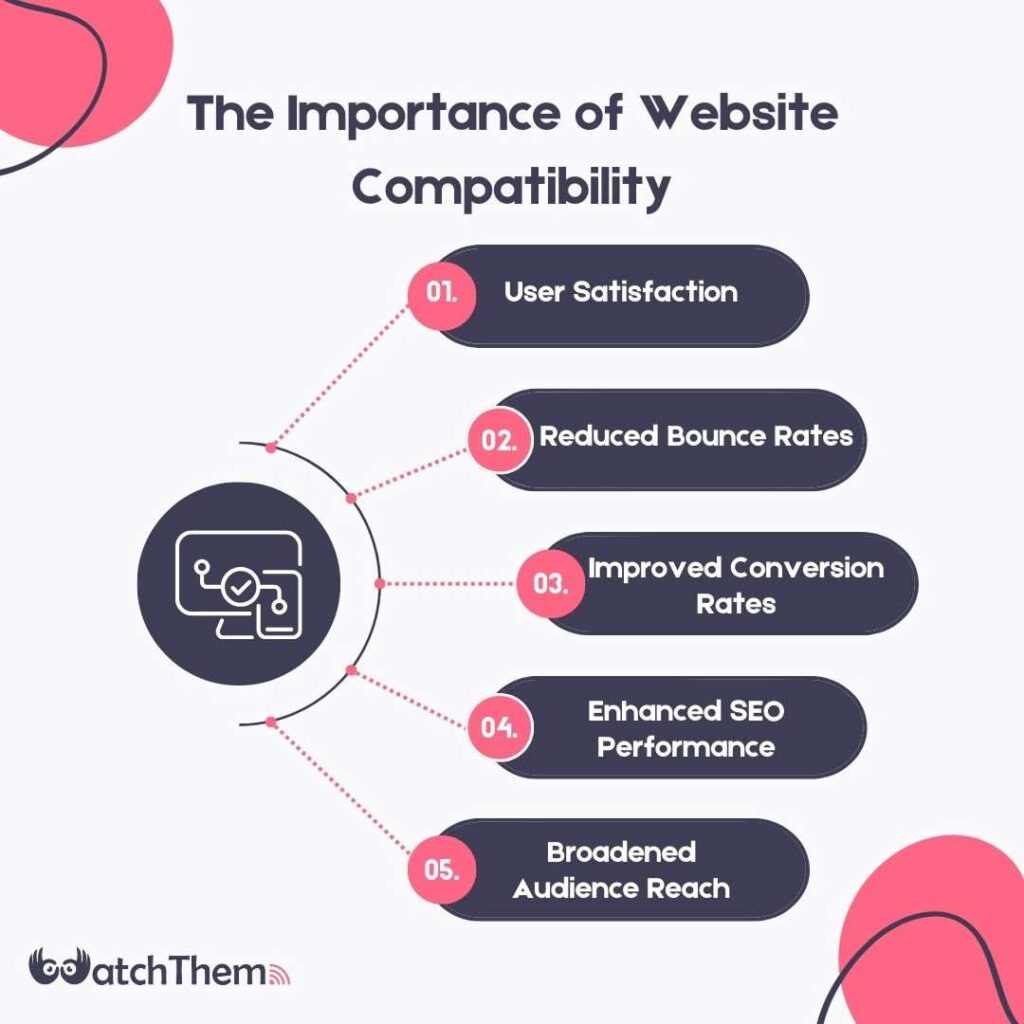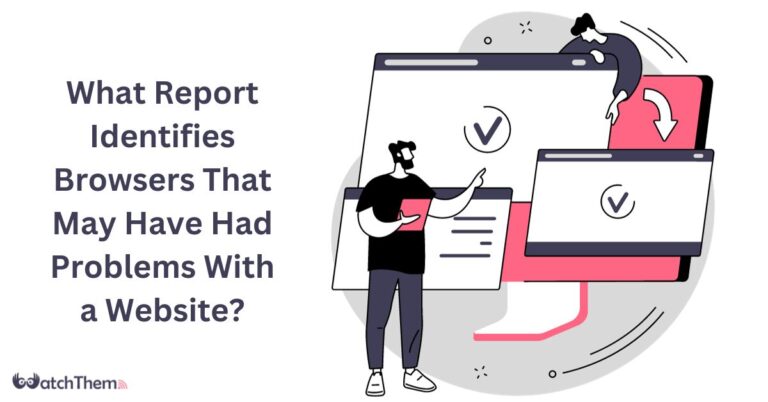Page Contents
The world of website analytics is vast, and Google Analytics remains one of the most prominent and widely used tools in this domain. However, using GA is not without its struggles. While exploring this tool for gathering data on your website’s performance or when taking the Google Analytics Individual Qualification exam, you might find yourself facing an important question: What report identifies browsers that may have had problems with a website?
As the first point of contact between potential customers and your business, identifying the browsers causing hiccups in your website’s user experience is crucial. It allows you to optimize performance and ensure a seamless journey for your visitors. Picture this scenario: your website is a grand stage, and the browsers are the actors; knowing which performers stumble on their lines can be the key to a flawless performance.
Without further ado, let’s delve into Google Analytics and its report, and explore how to make the most of them!
What Report Identifies Browsers That May Have Had Problems With a Website?
The report in Google Analytics that specifically identifies browsers that may have had problems with a website is the ‘Browser & OS‘ report. This insightful tool provides a detailed breakdown of the various web browsers and operating systems your visitors are using to access your site. Analyzing this report enables you to pinpoint potential issues related to specific browsers, allowing you to take proactive steps to deliver exceptional customer experience.
Here’s a step-by-step guide on how to access and interpret the ‘Browser & OS’ report in Google Analytics:
- Access Google Analytics: Log in to your Google Analytics account, navigate to the specific property, and view the website you want to analyze.
- Navigate to Audience Reports: In the left-hand sidebar, click on ‘Audience’ to expand the menu.
- Select ‘Technology’ and then ‘Browser & OS’: Within the ‘Audience’ section, click on ‘Technology,’ and from the drop-down menu, select ‘Browser & OS.’
- Review the Report: The ‘Browser & OS’ report will display a list of browsers and operating systems used by your website visitors. You can see website metrics such as sessions, bounce rate, and average session duration for each browser.
- Identify Potential Issues: Look for browsers with higher-than-average bounce rates or lower session durations. These metrics can indicate potential problems or compatibility issues with specific browsers.
- Segment Data if Necessary: You can further refine your analysis by using segmentation. For example, you might want to view data for desktop and mobile browsers separately to identify platform-specific issues.
- Take Action: Once you’ve identified browsers that may have had problems, investigate potential reasons for the issues. It could be related to website design, functionality, or compatibility issues with certain browser versions.
- Optimize for Problematic Browsers: Use the insights gained to optimize your website for the identified problematic browsers. This may involve making adjustments to your website’s code, design, or functionality to ensure a smoother experience for users on those browsers.
Learning the answer to questions such as ‘What report identifies browsers that may have had problems with a website?’ is one thing; knowing how to use this answer to your advantage is another. If you want to enhance the overall performance of your website and create a more inclusive user experience across different browsers and operating systems, we recommend regularly monitoring and acting upon the information provided by the ‘Browser & OS’ report in Google Analytics.
The Importance of Website Compatibility
Website compatibility isn’t just a checkbox on a to-do list; it’s the essence of welcoming visitors into the perfect digital realm. The ‘Browser & OS’ report in Google Analytics is your winning ticket to unveil the intricate details of your audience’s experience, allowing you to optimize your website.


Imagine a user navigating your website seamlessly, regardless of whether they’re using Chrome, Safari, Firefox, or any other browser. That’s the magic of optimization and website compatibility, transforming potential hiccups into a symphony of user satisfaction.
Why is it important to know what report identifies browsers that may have had problems with a website? Well, let’s take a closer look at the importance of website compatibility, and how it can enhance your website’s overall performance to understand the answer:
#1 User Satisfaction
Users accessing your website through different browsers and devices expect a smooth experience. Identifying and resolving compatibility issues ensures that all visitors, regardless of their chosen browser or operating system, enjoy a user-friendly interaction with your site.
#2 Reduced Bounce Rates
High bounce rates, especially attributed to specific browsers, can signal potential problems. Make sure to address compatibility issues in order to reduce bounce rates and encourage visitors to stay longer on your site and explore its content.
#3 Improved Conversion Rates
Incompatibility issues may not only lead to higher bounce rates but also impact conversion rates. Users encountering problems may abandon transactions or other desired actions on your website. Optimizing for problematic browsers can positively impact conversion rates.
#4 Enhanced SEO Performance
Search engines consider user experience as a ranking factor. Websites that provide an exceptional experience across different browsers and devices are more likely to rank higher in search results. Monitoring and optimizing for browser compatibility contribute to overall SEO success.
#5 Broadened Audience Reach
Internet users utilize various browsers and devices. Ensuring your website functions well across this diversity broadens your audience reach. A compatible website attracts a more diverse audience, potentially increasing your overall website traffic.
Keeping track of your website’s compatibility will not only help you identify issues but also guide you in implementing targeted optimizations, ultimately leading to a more user-friendly and successful online presence.
FAQs: Which Report Helps Identify Which Browsers May Have Had Problems With Your Website
We understand that you might still have some questions regarding website compatibility and what report identifies browsers that may have had problems with a website. So, here are some frequently asked questions to help you out:
Q1. What Is Website Compatibility Testing?
Website compatibility testing is a process of evaluating the ability of a website to function and display correctly across different browsers, devices, operating systems, and resolutions. The goal is to ensure that the website provides a consistent and optimal user experience regardless of the diverse environments in which it may be accessed.
Q2. How Do I Ensure Browser Compatibility?
To ensure browser compatibility, conduct cross-browser testing on Chrome, Firefox, Safari, Edge, and Internet Explorer. Implement responsive design, validate HTML/CSS, and use feature detection. Stay updated on browser releases, include a CSS reset, and use developer tools for testing. These practices will enhance your website’s compatibility across browsers.
Conclusion
Regardless of your business type, mastering the intricacies of website analytics, particularly with Google Analytics, is essential. The ‘Browser & OS’ report serves as the key to unlocking insights into potential browser-related issues. This guide empowers users to navigate and leverage this report effectively, answering the critical question: ‘What report identifies browsers that may have had problems with a website?’
Make sure to regularly monitor your website’s compatibility so that you can ensure a seamless and inclusive digital experience!

